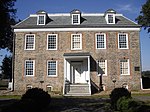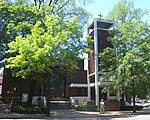New York City Water Tunnel No. 3
New York City Water Tunnel No. 3 is a water-supply tunnel forming part of the New York City water supply system. It is being built by the New York City Department of Environmental Protection to provide New York City with a third connection to its upstate water supply. Water Tunnel No. 3 is the largest capital construction project in New York City history. The tunnel will be more than 60 miles (97 km) long, travel 500 feet (150 m) below street level in sections, and will cost over $6 billion. Construction began in 1970 and is expected to not be completed until at least 2026. The tunnel will serve as a backup to Water Tunnel No. 1, completed in 1917, and Water Tunnel No. 2, completed in 1936.
Excerpt from the Wikipedia article New York City Water Tunnel No. 3 (License: CC BY-SA 3.0, Authors).New York City Water Tunnel No. 3
John Kieran Nature Trail, New York The Bronx
Geographical coordinates (GPS) Address Nearby Places Show on map
Geographical coordinates (GPS)
| Latitude | Longitude |
|---|---|
| N 40.894 ° | E -73.89 ° |
Address
John Kieran Nature Trail
John Kieran Nature Trail
10471 New York, The Bronx
New York, United States
Open on Google Maps






